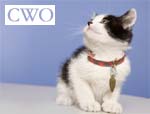
Recently, I've ventured out into a new cover diaper and it is ' Wool diaper cover'. I knew of wool clothing and owned a few pieces but never knew how to properly care for them aside no wringing , no hot wash and etc. Then taking the chance to purchase a wool diaper cover
( considering the amount i had to spend on it) i had to really care for this special merino wool cover.
That includes on how to wash and care for it, and all the HOW, WHY and WHICH type of fabric that suits our little darlings. And then began my extensive search on the internet regarding wool cover.
Why wool?
In contrast to synthetics, which are commonly used as wetness barriers when cloth diapering, wool is antibacterial. The difference lies in the way the fibers wick. Synthetics hold or block moisture in its liquid state, thus creating an ideal breeding ground for bacteria to grow. Wool, on the other hand, absorbs moisture in its vapor state, easily releasing it into the air, before bacteria ever has a chance to set up shop.
Wool is lanolin-rich. Lanolin is a popular ingredient in soapmaking. Lanolin’s constant presence in wool, along with the friction produced by vapor-swollen wool fibers, enables the wool to perpetually scrub itself clean. On those occasions when wool gets soiled with larger particles that can’t evaporate, the lanolin content makes it a breeze to rinse those deposits away.
Odours are caused by bacteria growing on the fibers. Because wool is anti-bacterial: no bacteria, no odour!
What type of wool covers are available?
Soakers: A soaker is a pull-on wool cover that somewhat resembles a brief or panty.
Longies: This is diaper-lingo for wool pants. One of the neat things about wool is that it can do double-duty as diaper cover and clothing at the same time!
Shorts: Just as the name says, these are shorts made out of wool that serve as diaper cover and clothing simultaneously.
Wraps: These are wool covers that envelope the diaper area and close using snaps, velcro, buttons, or even ties
How are these covers made?
Wool covers are typically hand-knit (or crocheted), machine-knit, or sewn from wool fabric. All work beautifully, and it is usually a choice of aesthetics or budget that determines which cover construction a parent will choose. Obviously, handmade garments are more time-consuming to create, and can therefore cost more, although not necessarily.
Aristocrats,Disana, and Babyology covers are examples of Machine-Knit wool, which can sometimes offer a more budget-friendly or durable alternative.
Fabric sewn covers can usually accommodate closures like snaps or velcro better than their knit counterparts. Examples of brands that make wool fabric covers are Niji, Nikki, Lana, Little Beetles, Biobottoms, Loveybums, Stacinator, Rumpwraps, and Vermont Diaper Company, to name only a few.
What about washing the wool?
Since wool is naturally anti-bacterial, throw out the idea that it needs to be washed each time it is worn. Simply rotate two or three covers throughout the diaper changing day, allowing them to air out between changes, and they’ll stay fresh for many days. How long? Depends. Many mamas report going a month or two between washes. You’ll know when it’s time to wash when the wool doesn’t smell fresh anymore.
If poo escapes the confines of your diaper for a wool field trip, that’s another story, since poo doesn’t turn to vapor.
Lanolin has natural cleansing properties, which make it very easy to rinse soil deposits off of your wool with lukewarm water. Once the poo has rinsed away, you’ll need to wash the cover.
There are a few ways to wash wool. Some people use baby shampoo, bar soap, or specialty commercial wool washes, like Eucalan. All are fine, but DO NOT use Woolite. It is not compatible with diapering because it strips the precious lanolin from the wool.
What is lanolizing?
"Freshly lanolized," or "needs lanolization" or something like that. What are they talking about?
For many people, using a lanolin-rich wool wash, like those mentioned above, is enough to maintain stability in the lanolin content of their diaper covers, and therefore the performance. Some, though, may find that their covers’ ability to act as a wetness barrier decreases over time and needs a boost. This is where lanolization comes in.
To lanolize a cover, basically all you need to do is dissolve some pure lanolin, like Lansinoh brand nipple ointment for nursing moms, in water and soak.
How much lanolin to use? If squeezing out of a tube, like Lansinoh, or any available lanolin in the market, then squeeze a line of lanolin about ¼ inch long.
How to make it dissolve in the water evenly? Start with about a cup of hot water, either hot from your tap, or boiled and cooled slightly. The heat will help the lanolin soften up and dissolve. (Some tips I've learned . Instead of throwing away your baby jar food, you can squirt lanolin into the jar and add hot water and shake real hard to dissolve the lanolin). Then add that small amount of hot water/dissolved lanolin mixture to your sink/pan/bucket of lukewarm water. Adding a small squirt of your lanolin-rich wool wash in this step would also be helpful, as it will keep the pure lanolin from clumping and staining your cover.
How long to soak? About 20 minutes should do it. Some prefer spinning in the washing machine , however it is recommended to squeeze it out between a towel.But isn't wool scratchy...and what about allergies?...what is organic wool?
Wool can be scratchy. But not all wool is. Just like human hair, it can be coarse or silky-fine. The thicker the individual wool fiber, the more coarse the wool garment will feel. Different breeds of sheep have characteristically fine or coarse wool. The Merino breed has the finest wool: its fibers measure between 18 and 22 microns wide. Other soft breeds include Rambouillet, Romeldale, and Targhee, whose fleece measure up to 26 microns. Amongst the coarsest are Lincoln and Cotswold, in the 37 to 40 micron range.
Merino wool feels buttery soft; not a touch of scratchiness to it. Beyond merino, each person is likely to have a different scale of which breeds are comfortable and which are too coarse. If you or your baby are extremely sensitive to coarse wool, you may wish to stick to merino covers only, although many people are able to wear and enjoy a variety of wool breeds and blends in absolute comfort.
About allergies: sadly, there are a few people who truly have an allergic reaction to wool, and therefore, cannot wear wool. The good news is that many people who think they have a wool allergy may find that they actually have a sensitivity to either the coarseness of the wool, or the chemicals that are used to process conventional wool, but not to the wool fiber itself. This gives many the option of switching to merino or other soft breeds, or using organic wool, or both, so that they, too, can enjoy this wonderful fiber.
Organic wool is, simply put, chemical-free wool. The sheep who grow the wool graze in pastures that have not been treated with herbicides or pesticides. Any supplemental feed is also chemical-free. The sheep are not dipped in chemicals while they’re still wearing the wool. And, once the wool is shorn, no harsh chemicals are used in the scouring and spinning process. The result? Beautiful, pure wool!
Dressing your baby in wool.How many covers do I need?
If using wool exclusively, I’d say a bare minimum of four. That gives you two to three to rotate through the day, and one to wash if soiled. Six would be a more comfortable number, in case baby has a day of explosive pooping, and the sky’s the limit as far as how many. Some truly addicted wool-diapering mamas have in excess of twenty in any given size.
There are two main types of critters who like to feast on wool: clothes moths and carpet beetles. Both are very small, measuring about ¼ inch long. Since they prefer dark, undisturbed areas to breed and feed, wool that is frequently used is not likely to be damaged, and needs no protection.
If your wool stash is large, or if you are going to store outgrown wool covers, then you will need to protect your garments. Mothballs, which are toxic and should never be in a home with children, and their natural cousin cedar oil, are only effective in extremely high concentrations on very young larvae, so therefore are not foolproof. Plastic will not allow the fibers to breathe, and moisture trapped in plastic-encased wool fibers can cause mold or mildew over time.
So what are you to do? It’s actually very cheap and easy to protect your wool. Wool pests will not eat plant fibers (unless soiled with human stains like blood, urine, or food), so storing your wool in clean cotton pillowcase is a great way to go. To be sure to keep the pests out, you can store the wool inside two pillowcases, each tied shut with ribbon or twine, with the tied ends on opposite sides. Store the double-bagged wool anywhere you have room for it, but it is best to avoid attics or basements.
If you fear your wool may have the beginnings of an infestation, all is not lost. Cold temperatures will kill any pests and their eggs. Just put your wool in the freezer! In a deep freezer (0 degrees F or lower), it only takes 3 days. In a kitchen freezer, which is usually set closer to the freezing point of 32 degrees, it may take up to three weeks. After removing the wool from the freezer, give it a good wash, and you’re worry free!
Articles from various internet resources.

 Extra tips on cotton produce:
Extra tips on cotton produce:



